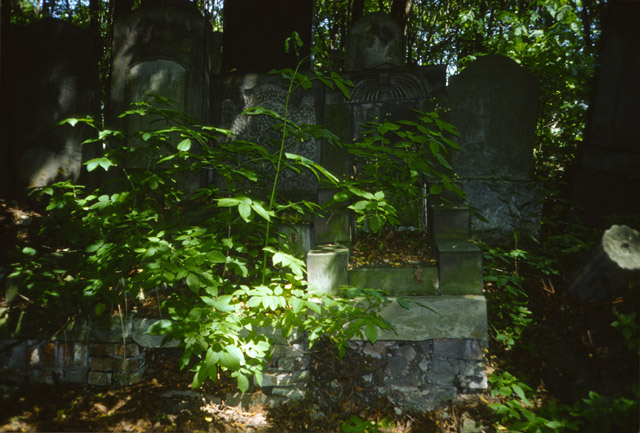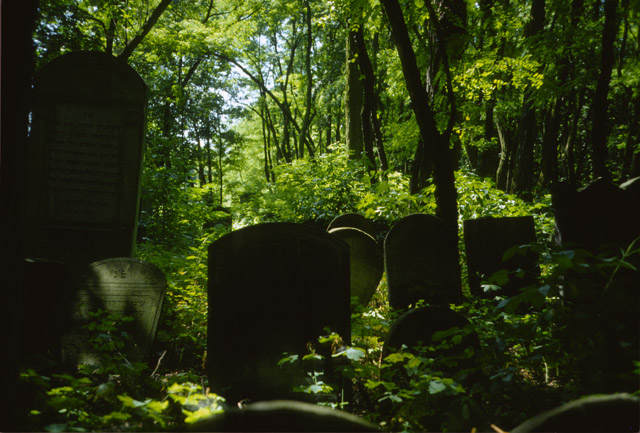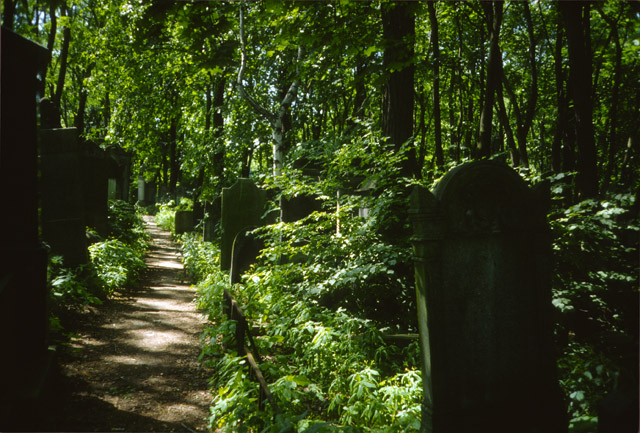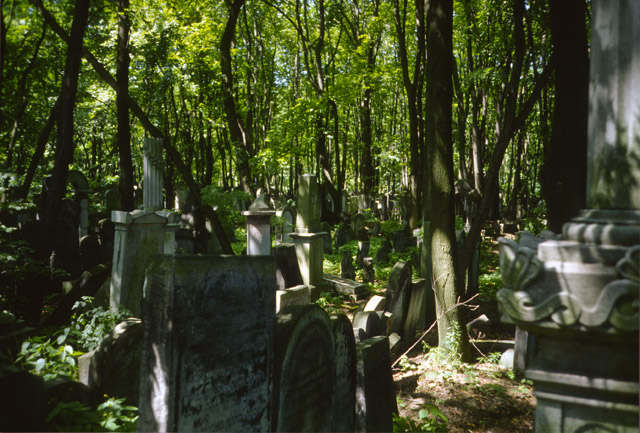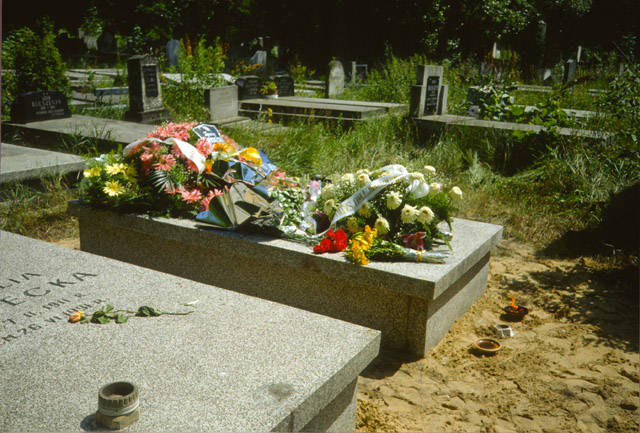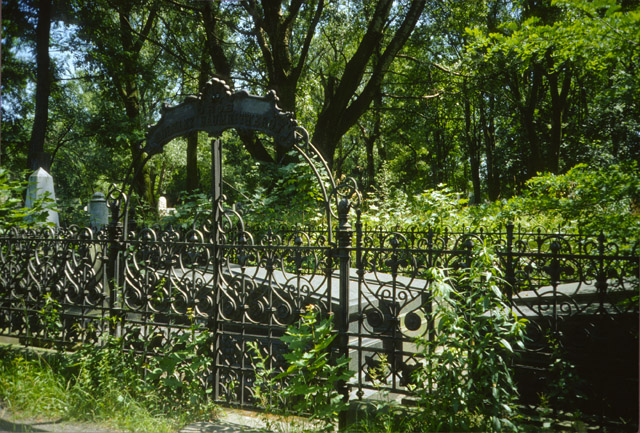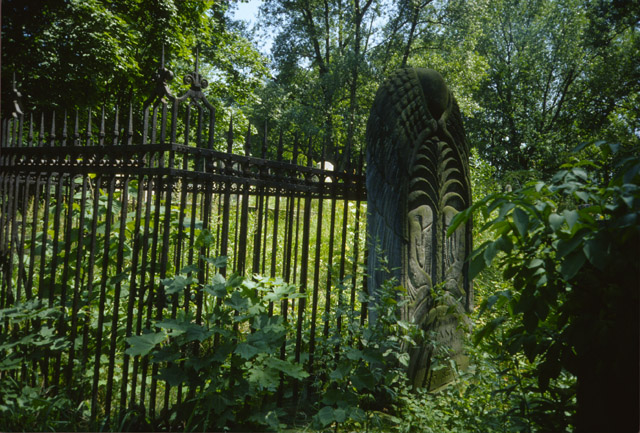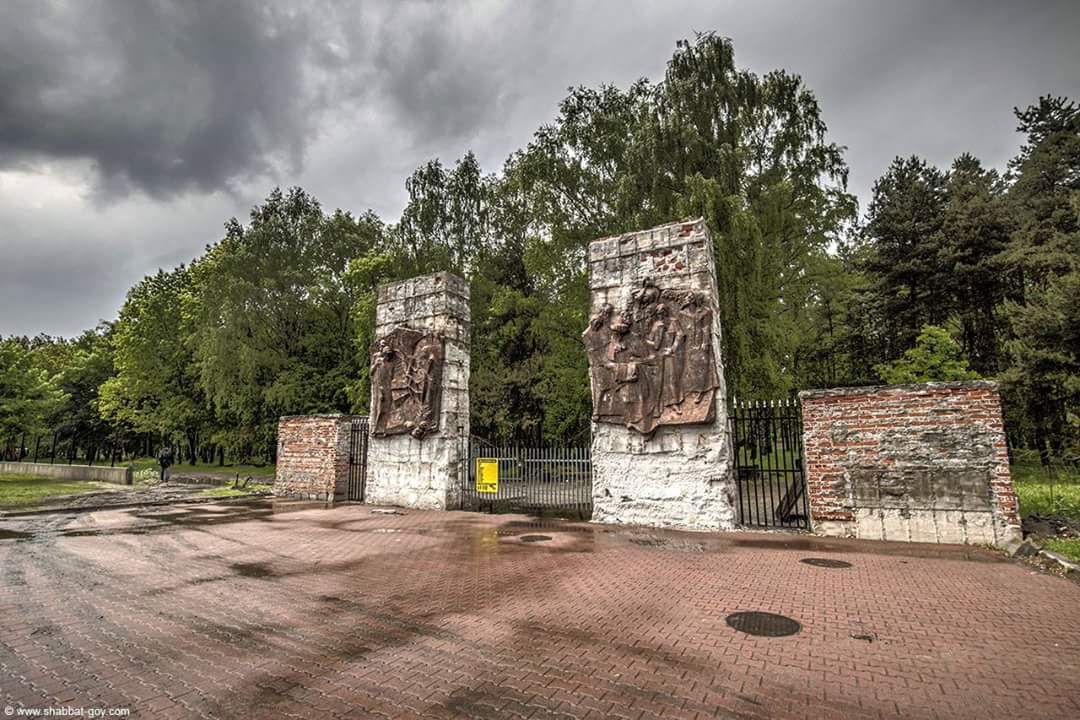(in 1780) also used the cemetery at Sochaczew
ALTERNATE NAMES: WARSZAWA [POL], WARSAW [ENG], VARSHEand ווארשע [YID], WARSCHAU [GER], VARSHAVA and Варшава [RUS], VARŠAVA [CZ], VARSÓ [HUNG], VARSAVIA [LAT], VARSOVIE [FR], VARSOVIA [SP], VARŠUVA [LITH]
- Yizkor Books
- Warshaw Di geshikte fun yidn in varshe
(New York, 1948) - Dos amolike yidishe Varshe, biz der shvel fun dritn khurbn; yisker-bletlekh nokh tayere noente umgekumene
(Montreal, 1967) - Pinkes Varshe
(Buenos Aires, 1955) - Warsaw
(Jerusalem, 1953-1973) - Arim ve-imahot be-yisrael; matsevet kodesh le-kehilot yisrael she-nehrevu bi-yedei aritsim u-tmeim be-milhemet ha-olam ha-aharona, vol. 3, Warsaw
(Jerusalem, 1948) - Pinkas ha-kehilot; entsiklopediya shel ha-yishuvim le-min hivasdam ve-ad le-aher shoat milhemet ha-olam ha-sheniya: Poland vol. 4: Warsaw and its region
(Jerusalem, 1989)
- Warshaw Di geshikte fun yidn in varshe
- JOWBR: Jewish Cemetery
- JOWBR Landsmanshaft:
(4):
- Museum of the
History of Polish Jews - Jewish Records Indexing Poland Town Page
- Pinkas HaKehilot, Poland, Vol. 4 (1989), p. 1-125: "Warszawa"
Falenica is a part of Wawer,a forested Warsaw district in the far SE corner of the city. Located on the right bank of the Vistula, until 1951 it was a separate village. Before WWII, Falenica was a favorite location for summer cottages and houses. During World War II the Germans opened a Jewish ghetto. All inhabitants were transported to Treblinka in August 1942. Yizkor, [January 2013]
JRI-Poland and JGS NY project to reconstruct the burial records. Warsaw Cemetery Records and Photographs. "Warsaw Cemetery Manager, Mr. Bolek Szenicer, like his father Pinkus before him, has been working diligently to reconstruct the Warsaw Cemetery records destroyed by the Nazis. After 20 years of work, more than 50,000 gravestones have been fully or partially indexed but another 200,000 remain to be done. If you have visited the immense Warsaw cemetery and have seen the jumble of stones and overgrowth, you can begin to appreciate the scale of the project. At present there are more than 30,000 indices in the JRI-Poland database and more are added each month." May 2012]
The Foundation of the Jewish Cemetery "Gesia" was established. Restoration of the preburial house and paving the courtyard by the gate was done. Source: US Commission [date?]
UPDATE: photo. town photos and link to 1910 map. synagogue sketch. [August 2005]
UPDATE: Cemetery photos. Cemetery photos. cemetery photos [January 2006]
history, map, sections, and photo
The Jewish Historical Institute Archives have about 4000 names; Warsaw cemetery director Boleslaw Szenicer (Cmentarz Zydowski, ul. Okopowa 49/51, Warszawa, Poland) has over 40,000 names in his database so far. He welcomes inquiries. The 4000 we have and the 40,000 he has do NOT overlap; they are different sections of the cemetery. Source: This email address is being protected from spambots. You need JavaScript enabled to view it. (Also see Poland ) [date?]
JEWISH CEMETERY :
-
Amid Drought, WWII Relics Are Being Discovered Under Poland's Vistula River. [Septm 2015]
- BRODNO: Jewish Headstones Used to Build Warsaw Park to Be Returned to Historic Jewish Cemetary sic [June 2016]
- [UPDATE] Brodno Jewish Cemetery Revisited [February 2017]
- Cmentarz Zydowski W Warszawie by Henryk Kroszczor and Henryk Zimler DS135.P62 W2778 1983. The cemetery at 49 Okopowa Street was the only Jewish burial ground in Warsaw. It was established at the beginning of the 19th century, being then the second Jewish cemetery beside the one at Praga (the suburb of Warsaw on the other side of the Vistula) existing for some thirty years. This listing was drawn from the Chapter Short Life Sketches, wherein there is more information. As annotated in listing, there is Date of Birth-Date of Death, a word on occupation/life's work and S=Section R=Row. The cemetery at Okopowa Street, about 30 ha, is designed to contain alleys, sections, and rows. There are over 100 sections. Before the outbreak of the war in 1939, about 150 thousand were buried. At the main alley in the distant part of the cemetery, one finds barrows that were heaped up on the old sections from which old tombstones and monuments were removed. This was necessary for lack of space and impossibility of increasing the area (such a situation occurred about 1915). A few names are listed under Warsaw. Also: A partial cemetery list is available; contact Joel Reisner. It is miraculous that among the ruins of bombed out Warsaw, where hundred's of thousands of Jewish lives were destroyed and 85% of Jewish records were burned in buildings razed to the ground, that the big Warsaw Jewish Cemetery, "The Gesia", was spared. It still survives, though overgrown with trees and brush and still preserves the gravestones of approximately 250,000 people. There are famous people buried there too like famous Yiddish writers I.L. Peretz, the actress Ida Kaminska and Zamenhof, the inventor of Esperanto.
- We arrived at the cemetery having walked down Mordechai Anielewicz Street and entered the grounds at around 10:00 a.m. on a Friday morning. I was surprised to see that Boleg (Berl) Szenicer, the person in charge of the cemetery, sitting behind a rough wooden desk in a small house is so young, maybe 40. With him was an elderly gentleman who comes to keep him company. Berl is slender, dark, with delicate features and brown eyes. One wants to feed him, strengthen him for the tremendous responsibility that he carries to care for all these graves in hostile surroundings. Last spring, 66 graves were desecrated and even as he sits across from me I see behind him a great big plastered over odd gray shape adjoining the door behind him. He tells us that damaged wall is where the robbers blowtorched the locks of the door and broke into the next small room which contained a safe with some money and precious old silver ritual objects in it which they stole. They also stole the computer on which he had begun to make a dent in the huge job of recording all the graves and their locations. Fortunately, he had a back up disk at home so all of that was not lost. However he is now without a computer and it needs to be a lap top that he can take with him on his bicycle as he goes around to the gravestones to directly record their information. It needs to be a lap-top also for him to be able to take it home with him with him and keep it safe from the next break in that is sure to come at this cemetery. I learned that the favorite break-in times for the anti-Jewish hooligans are Friday night late and Saturday so this devoted young man, Berl Szenicer spends his Fridays sitting in his little office late into the night listening for trouble and stays there on Shabat. And the old man sitting with him that morning told me he fears for Berl even though they have now hired a guard for the most dangerous times to be with him. Berl had grown up around the cemetery and came to work there when his father was ill since there was no one else to take care after his father died. Berl felt that he could not abandon the place he had grown up in and inherited his father's work. The Jewish community of Warsaw was so destroyed by WW2, and demoralized by pogroms and subsequent communist control that most who were able to emigrated. Consequently, now there may be only 1000 Jews remaining in Warsaw, 90% of them elderly. No one knows for sure about the numbers because Poland is not a place where Jews feel safe to be open and counted. In any case, Berl Szenicer is one of few young vibrant people able to do the work of maintaining Jewish heritage there. Source: This email address is being protected from spambots. You need JavaScript enabled to view it. FAX: 310-454-4492 or This email address is being protected from spambots. You need JavaScript enabled to view it..
- Radosc burial list [Jan 2015]
- Brodno burial list [Jan 2015]
- Okopowa burial list [Jan 2015]
- photos and history and a link to the cemetery plan. "...situated in Okopowa Street (former Gesia Street), founded in 1799..." [May 2002]
- history [May 200?]
- Return of matzevot to cemetery [Aug 2014]
- Comprehensive story on Brodno cemetery matzevot in Warsaw [Oct 2014]
- Source: Warsaw Will Return 1,000 Gravestones to Jewish Cemetery. THE LOOTED matzevot HAD BEEN USED TO BUILD A STRUCTURE IN A CITY PARK
- Sefer Hahlat Olamia . (Book of Eternity place; Warsaw cemetery graves of Rabbis & wellknown merchants), by Yevin, Shemuel; Warsaw, 1882. 112p. (Hebrew); Note: Period: 1794-1882. 334 tmsts. chronological. no index. Source: National and University Library, Jerusalem
- Cmentarze Zydowskie w Warszawie: prezwodnik ilustrowany by Leon Przysuskier. 110, xxi p., (1) leaf of plates (folded); ill; 21 cm. call #DS135.p62 W3286 1992; Jewish cemeteries.
- Cmentarze zydowskie w Warszawie (Jewish cemeteries in Warsaw) by H. Paszkiewicz, P. Paszkiewicz and M. Krajewska. Warsaw, 1992. 68 pages, 64 plates, illustrated, map, polish. 93B4508. Notes: Chiefly tombstone photographs, names in footnotes, tombstones chiefly from Cemetery at Okopowa St. from 1807, cemetery history. source: National and University Library, Jerusalem
- Cmentarz Powazkoski w Warszawie, 3191, exhibition catelog, 10/27/1997, "Waldorff Jerzy, Czynska Zofia, Olszewska Barbar", title:,Zespot autorow,; Krajowa Agencja Wydawnicza rsw;" Prasa-Ksiazka-Ruch";, 1984, 368p., Polish, 83-03-00758-0; Source: contact This email address is being protected from spambots. You need JavaScript enabled to view it.. The books are among the collection at the Jewish Museum of Belgium.
- The Jewish cemetery on Okopowa St. , Warsaw, by J. Jagielski. Warsaw, 1986. 1 folded sheet, illustrated plan, polish text & English title and summary. 93L5. Notes: 203 names, 1852-1983, alphabetical list of names including birth and death dates, professions index, cemetery history and plan. source: National and University Library, Jerusalem
- A Tribe of Stones; Jewish cemeteries in Poland / photographs, text, tombstone rubbinhgs and selection of mottoes by Monika Krajewska; with an introduction by Rafael Scharf.; 242 p; chiefly ill.; 33 cm. call # BM 337 .K73 1993.
- Time of stones by M. Krajewska. Warsaw, 1983. 165 pages of illustrations, plates. 2-88B2760. Notes: Tombstone photograph album. non-alphabetical index of places, 165 tombstone photographs (some readable names), English translation of Czas Kameni S2- 84B1519. German translation 1982:S2-84B1520. Source: National and University Library, Jerusalem
- Shonberg Family Aid Society (New York, N.Y.) Records, 1916-1969. Description: .3 linear ft. Notes: Mutual aid society organized in 1912 and incorporated in 1915 by Shonberg (Shoenberg) family immigrants from the Warsaw, Poland area. Membership is open to Shonberg direct descendents and spouses. ...YIVO collections are in Yiddish, Russian, Polish, English, Hebrew, and other European and non-European languages. Location: YIVO Institute for Jewish Research, New York, NY. Control No.: NXYH90-A47 [December 2000]
- Gruber, Ruth Ellen. Jewish Heritage Travel A Guide to East-Central Europe . New York: John Wiley & Sons, Inc., 1992. p. 25, 27-33; Synogogue 30
- Warszawa (Warsaw), ulica Okopowa 49/51. Established 1806. About 150,000 tombstones. Tombs of the writers: I. Perec, An-ski, D. Nomberg; historians: S. Askenazy, M. Balaban; politicians: F. Perl, B. Grosser, A. Czerniakow; actress Esther Rachel Kaminska; publishers: S. Orgelbrand, J. Mortkowicz; creator of Esperanto, L. Zamenhof; Rabbis B. Meisels and Ch. Solowiejczyk; ohel of tzaddiks from Warka, Mszczonow, Modrzyce, Radzymin; tombs of insurgents of 1863; mass graves of soldiers who fell in 1939; tombs of Warsaw Ghetto fighters; memorial to Janusz Korczak. [source?]
By Stephanie Butnick|August 15, 2014 2:21 PM| Comments: 6
Warsaw's Okopowa Street Jewish Cemetery(Wikimedia)
The city of Warsaw has announced plans to recover 1,000 gravestones, or matzevot, that were taken from the city's Jewish cemetery and used to build a structure in a city park. The gravestones, JTA reports, are "currently part of a pergola and stairs at a park in Warsaw's Praga district." The city plans to return the matzevot to the Jewish cemetery.
The city's change of heart was the result of months of campaigning by an organization called From the Depths, whose Matzeva Project locates and restores misused Jewish gravestones across Poland.
The practice of removing Jewish gravestones from cemeteries and using them for other purposes was actually quite common in Poland since the 1940s. As Stefan Lorenzutti wrote in Tablet in 2013, "‘Quarried'" from cemeteries during World War II (by the Nazis), the decades that followed (by Poles), and even up until the present day, matzevot had been and continue to be used in any instance in which ordinary stone might normally, mundanely, and practically suffice." (A controversial new Polish film, Aftermath, tells the story of a modern-day Pole who becomes fixated on recovering the matzevot he finds throughout his village, whose project-and the truths he uncovers-creates an uproar in his sleepy Polish town.)
Photographer Łukasz Baksik spent three years documenting "looted and appropriated" gravestones across Poland; the photographs wound up becoming a book called Matzevot for Everyday Use. You can see a slideshow of some of the photos here, the images are nothing short of haunting.
As Lorenzutti wrote of the collection,
The matzevot Baksik photographed had been repurposed (a tricky verb in this context) as paving stones for courtyards and passageways, or else to patch crumbling walls and curbstones in need of reinforcement. They had been shaped into querns and grindstones; had been used to construct a cowshed, a pergola in a city park, a sandbox for children; had ended up as "recyclable" tablets for new Catholic gravestones-the Jewish gravestone was simply carved into again, like a palimpsest-and as a path for monks who, Baksik relates, "had become used to walking on a paved path, and not through the mud." Perhaps the pergola Baksik photographed is the one whose matzevot are now being returned to where they belong. [August 2014]
Photos courtesy of This email address is being protected from spambots. You need JavaScript enabled to view it., July 2011
[UPDATE] Vandals attack Okopowa Street Cemetery [February 2015]
Photo of main gate to Brodno Jewish Cemetery courtesy This email address is being protected from spambots. You need JavaScript enabled to view it. [May 2015]
[UPDATE} Wikipedia article on Brodno Cemetery [May 2015]
[UPDATE] Photographs of Piles of Matzevot in Brodno Cemetery [January 2016]
[UPDATE] Photos by Charles Burns of Okopowa Cemetery [April 2016]
[UPDATE] A Visit to the Andielewicz Street Cemetery [Octobere 2016]
[UPDATE] Polish Government donates 100 million zloty (28 million dollars) for preservation of Okopowa Cemetery [December 2017]
